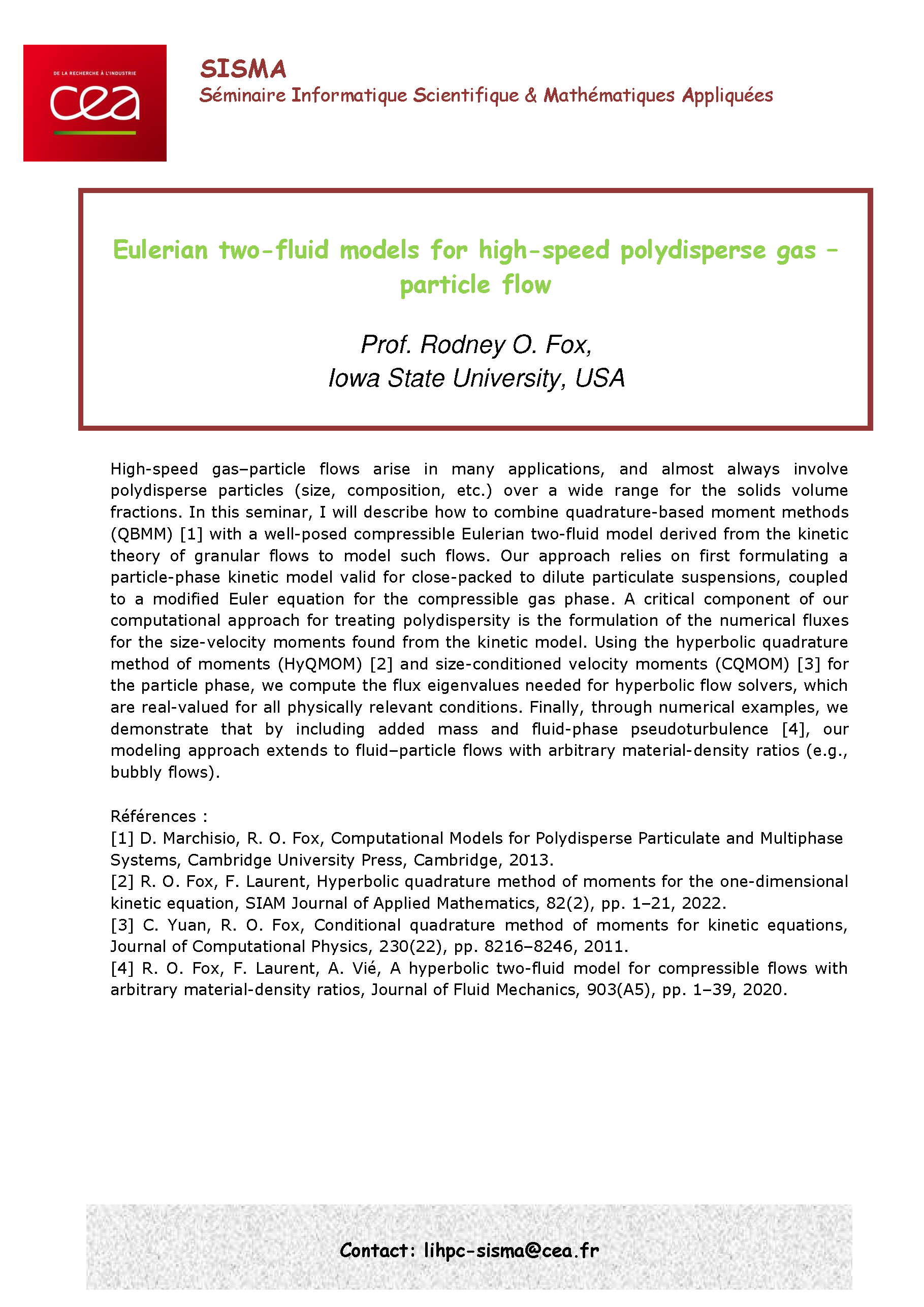High-speed gas–particle flows arise in many applications, and almost always involve polydisperse particles (size, composition, etc.) over a wide range for the solids volume fractions. In this seminar, I will describe how to combine quadrature-based moment methods (QBMM)1 with a well-posed compressible Eulerian two-fluid model derived from the kinetic theory of granular flows to model such flows. Our approach relies on first formulating a particle-phase kinetic model valid for close-packed to dilute particulate suspensions, coupled to a modified Euler equation for the compressible gas phase. A critical component of our computational approach for treating polydispersity is the formulation of the numerical fluxes for the size-velocity moments found from the kinetic model. Using the hyperbolic quadrature method of moments (HyQMOM)2 and size-conditioned velocity moments (CQMOM)3 for the particle phase, we compute the flux eigenvalues needed for hyperbolic flow solvers, which are real-valued for all physically relevant conditions. Finally, through numerical examples, we demonstrate that by including added mass and fluid-phase pseudoturbulence4, our modeling approach extends to fluid–particle flows with arbitrary material-density ratios (e.g., bubbly flows).
Bibliography
-
D. Marchisio, R. O. Fox, Computational Models for Polydisperse Particulate and Multiphase Systems, Cambridge University Press, Cambridge, 2013. ↩︎
-
R. O. Fox, F. Laurent, Hyperbolic quadrature method of moments for the one-dimensional kinetic equation, SIAM Journal of Applied Mathematics, 82(2), pp. 1–21, 2022. ↩︎
-
C. Yuan, R. O. Fox, Conditional quadrature method of moments for kinetic equations, Journal of Computational Physics, 230(22), pp. 8216–8246, 2011. ↩︎
-
R. O. Fox, F. Laurent, A. Vié, A hyperbolic two-fluid model for compressible flows with arbitrary material-density ratios, Journal of Fluid Mechanics, 903(A5), pp. 1–39, 2020. ↩︎




